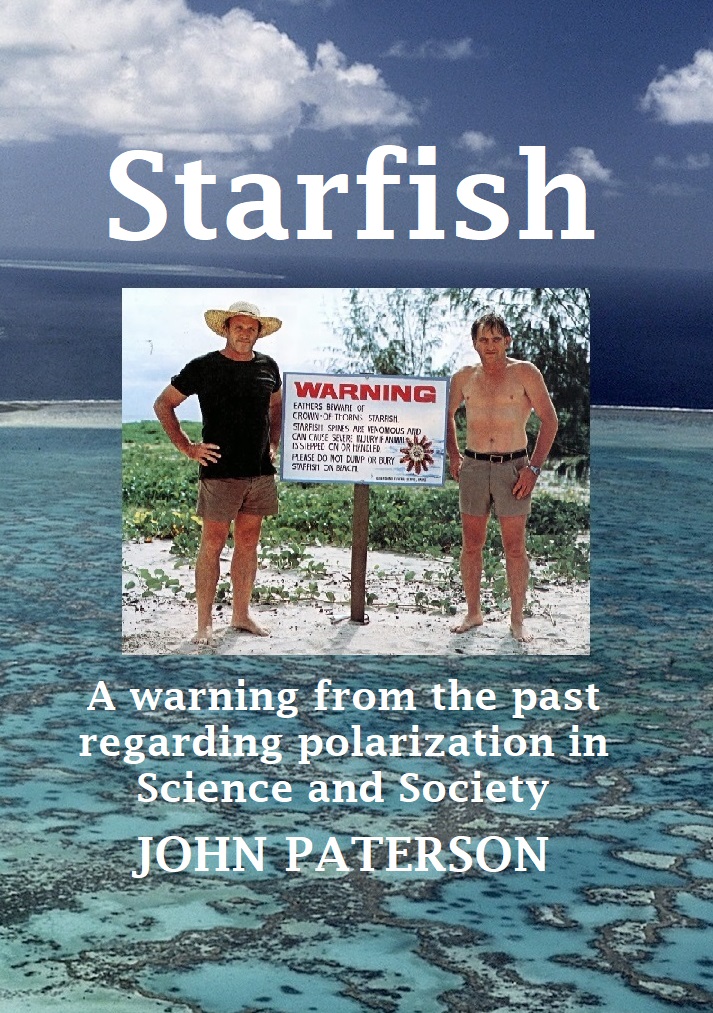What we like to eat.
Prey Preference
It all depends on what we like to eat or maybe not.
”I’m going to put all you starfish in a cage with Triton and see which species get eaten,” said Dan the Diver. “That should tell us its prey preference. What could possibly go wrong?”
“It all depends on what we like to eat,” said Triton “but remember that these starfish are poisonous, so leave them for me. One is even venomous, so don’t touch them unless you know the difference.”
“I don’t mind eating you Elegant Starfish,” said Triton “but you are not much of a feed”. I know how to deal with your poisons and armor but unless I am very hungry, I wouldn’t bother.”
“You both know what to do,” said Triton “you stay out of my way. You even hide under coral rubble in the shallows. Now-a-days, I stay away from there as divers and shell collectors love me for my shell.”
“If I eat one of your arms, you will just grow another,” said Triton “You can just cast them off and get away. You hide under rubble in the shallows as well.”
“I know all about tritons,” said the Starfish. “I luckily escaped from one about a month ago but my arms are now starting to regrow”.
“I’m the Blue Starfish called Linckia,” said another. “My skin is very tough but Triton still eats me. Luckily, I’m not one of its favorites and it has to be pretty hungry to eat me”.
”I’m the Red Starfish called Euretaster and my thick skin covers me all over. I brood my baby starfish under this skin and it keeps them safe – unless I get eaten.”
”My name is Astropecten and I have spines all along my arms. They don’t bother Triton at all as it just spits them out after swallowing me whole. I hide out on the sand for safety”.
”Dan the Diver used to think that I was Triton’s favorite food because they ate more of me,” said Nardoa Starfish. “Then they discovered that I was just slow and didn’t get away.”
”I’m super-fast for a starfish,” said Thorny. “I can often get away from Triton if I am bigger. I’m good tucker for Triton but in nature it’s often not what you like to eat but what you can catch.”
”I make baby starfish by casting off arms. They each grow into new starfish,” said Echinaster. “Sometimes I’m covered in Comb Jellies and parasitized by Eulima, a distant cousin of Triton.”
”That lump on my arm is another distant cousin of Triton called Stylifer which gets under my skin,” said Neoferdina Starfish. “These gastropod parasites can be quite a problem.”
”When Stylifer gets under my skin, it stops me casting my arms off and I grow bigger,” said the Mottled Linkia. “It must want me all in one piece to help its survival”.
”So you can’t just put things in a cage and expect it to be like the real world,” said Dan the Diver. “When you watch Triton closely, you see that Thorny is good at escaping from Triton”.
”My spines are incredibly sharp and venomous,” said Thorny. “But If Triton can catch me, it has no trouble eating me and it just spits out the spines when its finished dinner”.
”President, Dan the Diver says Tritons don’t always catch big Thorny Starfish, but just being around keeps the starfish on their toes. That’s the most important bit to understand.”
”We don’t want them getting too close,” said Junior. “We did that in Maths today and the numbers are simply enormous. I’d have millions of brothers and sisters. There’d be no coral.







Here is a summary of the web page:
ReplyDelete- **What we like to eat**: A blog post about the prey preference of the giant triton, a predatory sea snail that feeds on starfish, and how it affects the coral reef ecosystem.
- **Starfish species**: A description of various starfish species that live on the coral reef, their characteristics, defenses, and reproduction strategies.
- **Triton research**: A collection of research papers and digital media related to the giant triton, its biology, ecology, and conservation.
- **Chatting with ChatGPT**: A series of conversations generated by an artificial intelligence model called ChatGPT, based on the topics of the blog post and the research papers.